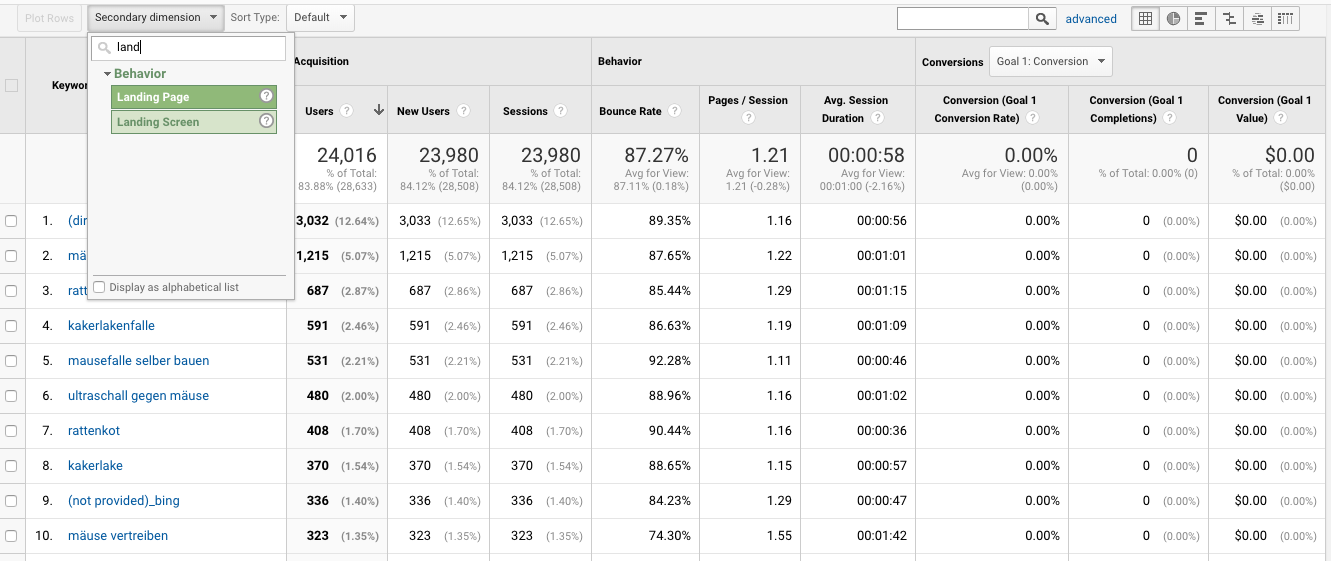Optimizing Data Interpretation: Google Analytics Secondary Dimension Explained
Optimizing Data Interpretation: Google Analytics Secondary Dimension Explained
Blog Article
Unlocking the Power of Second Dimension Analytics for Improved Information Insights and Decision-Making
In the realm of data analytics, key measurements frequently take the spotlight, however the real deepness of understandings lies within the realm of additional dimensions. These extra information factors supply a nuanced perspective that can illuminate connections and patterns not conveniently noticeable initially glance. By utilizing the power of additional measurement analytics, companies can reveal concealed fads, reveal relationships, and extract more meaningful conclusions from their data. The potential for enhanced decision-making through the usage of these secondary dimensions is vast, guaranteeing a deeper understanding of complex data sets and leading the means for even more enlightened critical selections.
Value of Additional Dimensions
Exploring the value of additional measurements in analytics unveils the covert layers of information understandings vital for informed decision-making in different domains. Second dimensions provide a much deeper understanding of main information by using additional context and viewpoints. By integrating secondary measurements into analytics, companies can extract extra nuanced and detailed understandings from their datasets.
One key relevance of additional measurements is their ability to sector and categorize primary information, permitting an extra detailed evaluation of specific subsets within a dataset. When looking at the data as a whole, this division makes it possible for companies to recognize patterns, trends, and outliers that may not be noticeable. Additional measurements aid in uncovering connections and reliances in between various variables, leading to even more accurate forecasting and predictive modeling - secondary dimension.
Moreover, additional measurements play a crucial function in improving data visualization and coverage. By including second measurements to visualizations, such as graphes or charts, analysts can create a lot more informative and informative representations of data, assisting in far better interaction of searchings for to stakeholders. On the whole, the assimilation of second measurements in analytics is crucial in opening the complete capacity of information and driving evidence-based decision-making.
Secret Benefits of Utilizing Secondary Measurements
Making use of additional dimensions in analytics supplies organizations a critical advantage by enhancing the depth and granularity of information understandings. By studying information utilizing additional measurements such as time, area, tool kind, or individual demographics, companies can reveal patterns, patterns, and correlations that might otherwise stay concealed.
Moreover, the usage of second dimensions boosts the context in which main data is analyzed. By leveraging secondary dimensions in analytics, organizations can harness the complete potential of their information to drive better decision-making and accomplish their business goals.
Advanced Information Evaluation Strategies
A deep dive right into innovative information evaluation strategies discloses innovative approaches for removing beneficial understandings from intricate datasets. One such strategy is equipment understanding, where formulas are used to recognize patterns within information, anticipate results, and make data-driven decisions. This method enables the automation of analytical version structure, making it possible for the handling of big volumes of data at a much faster rate than standard techniques.
One more advanced technique is anticipating analytics, which utilizes statistical algorithms and artificial intelligence strategies to forecast future end results based upon historical data. By assessing patterns and patterns, companies can anticipate consumer habits, market trends, and possible dangers, empowering them to make aggressive choices.
Additionally, message mining and belief analysis are beneficial methods for extracting understandings from disorganized data resources such as social networks comments, consumer evaluations, and study actions. By evaluating message data, companies can comprehend customer viewpoints, identify arising trends, and improve their services or products based upon comments.
Enhancing Decision-Making Via Additional Measurements

Enhancing decision-making via basics secondary dimensions allows organizations to make more notified and targeted calculated selections. By segmenting customer data based on additional dimensions like buying history or interaction degrees, business can customize their advertising approaches to details target market sectors, leading to boosted conversion prices and consumer contentment. In addition, second measurements can aid recognize relationships and partnerships in between different variables, allowing organizations to make data-driven decisions that drive development and productivity.
Carrying Out Additional Dimension Analytics
When incorporating second measurements in analytics, organizations can open much deeper insights that drive strategic decision-making and boost total performance. Implementing second measurement analytics requires an organized technique to guarantee effective application of this powerful tool. The primary step is to recognize the crucial metrics and dimensions More Help that straighten with the company's strategic objectives. This involves recognizing the certain inquiries the organization looks for to respond to and the information factors required to resolve them.

In addition, organizations must utilize advanced analytics tools and modern technologies to streamline the procedure of including secondary dimensions. These devices can automate information handling, analysis, and visualization, enabling companies to concentrate on analyzing insights rather than hands-on information adjustment.
Conclusion
In websites final thought, additional measurement analytics play a crucial function in improving information understandings and decision-making procedures. By making use of advanced data analysis techniques and executing additional measurements successfully, companies can open the power of their information to drive critical business decisions. The key benefits of utilizing secondary dimensions can not be overstated, as they provide a deeper understanding of data trends and relationships. It is essential for organizations to leverage secondary measurement analytics to remain affordable in today's data-driven landscape.
In the realm of information analytics, main dimensions frequently take the limelight, yet the true depth of understandings exists within the realm of second measurements.Using secondary measurements in analytics provides organizations a critical benefit by enhancing the depth and granularity of information insights. By leveraging second dimensions in analytics, organizations can harness the complete potential of their information to drive much better decision-making and achieve their organization goals.
Implementing information validation procedures and routine audits can aid preserve information high quality and reliability.
By making use of advanced information analysis strategies and executing second dimensions properly, organizations can open the power of their data to drive critical company choices.
Report this page